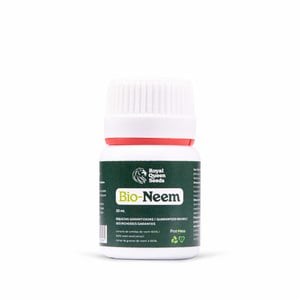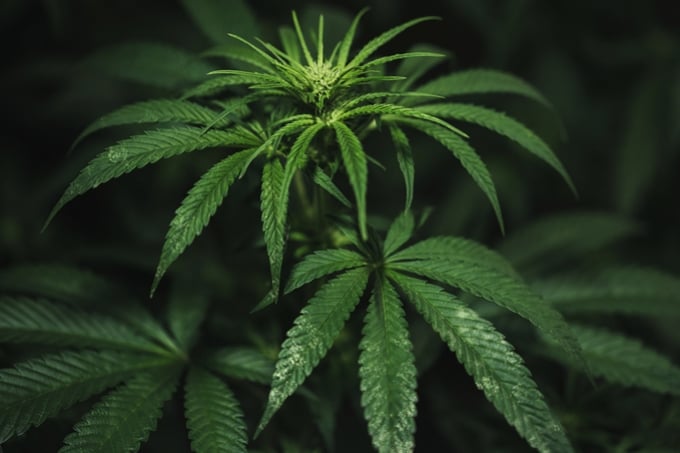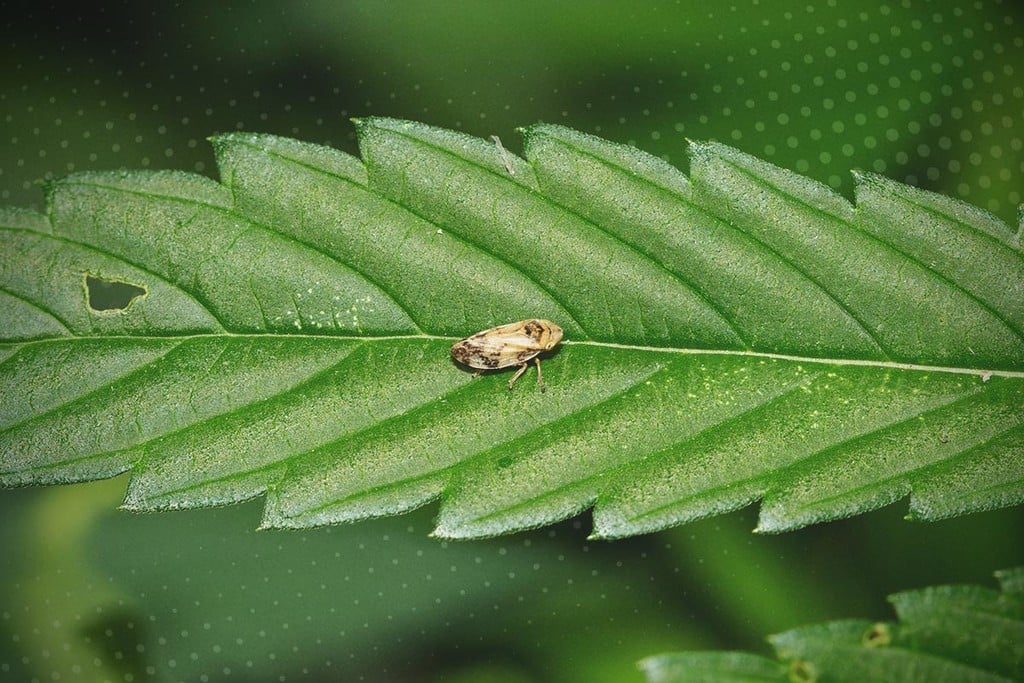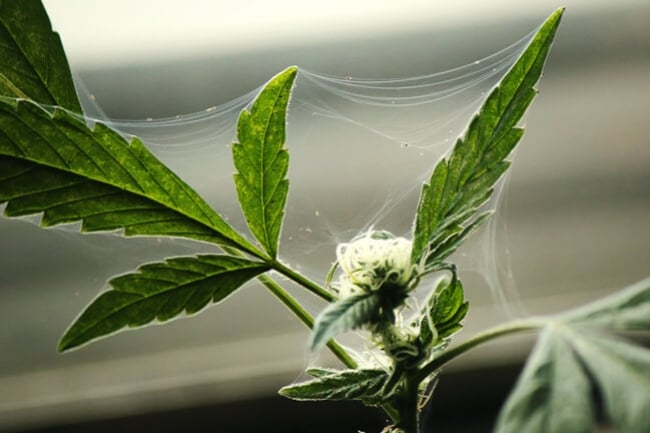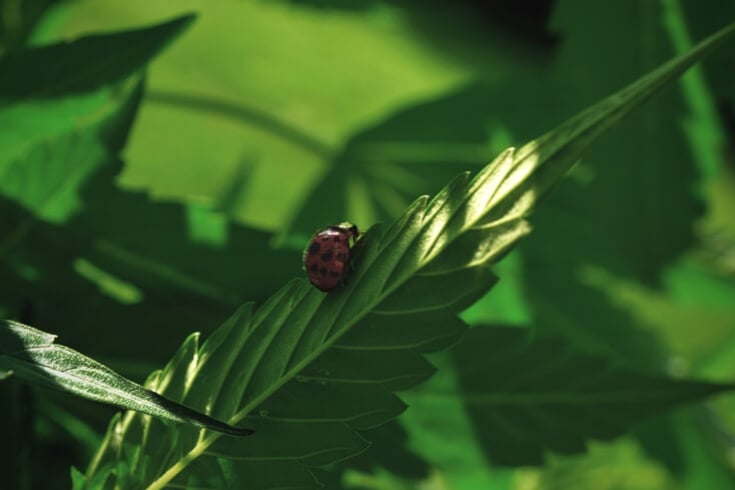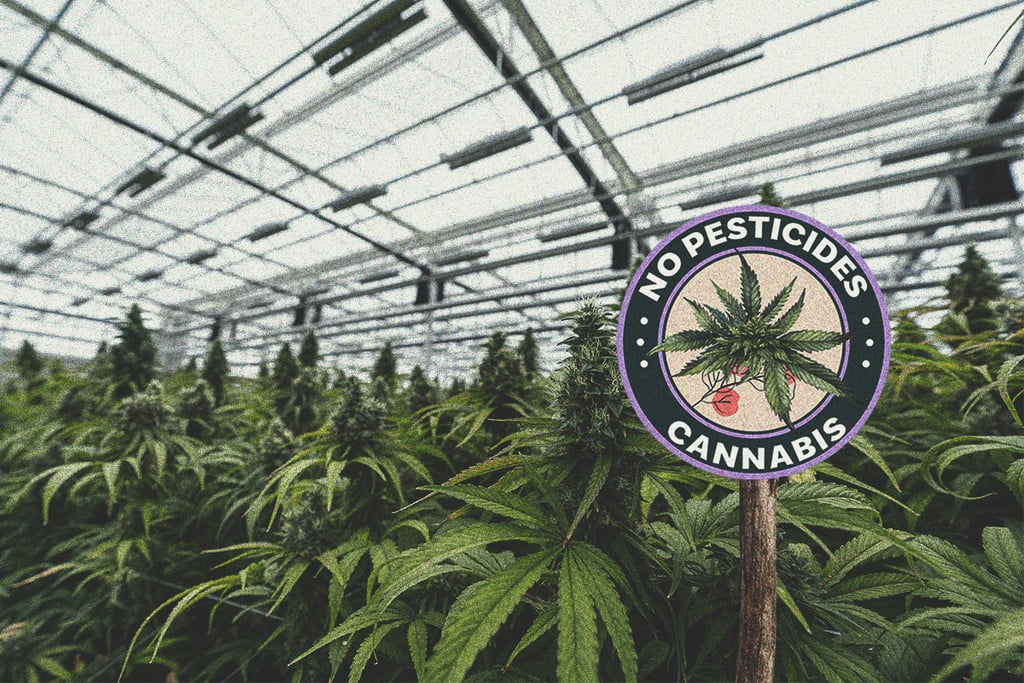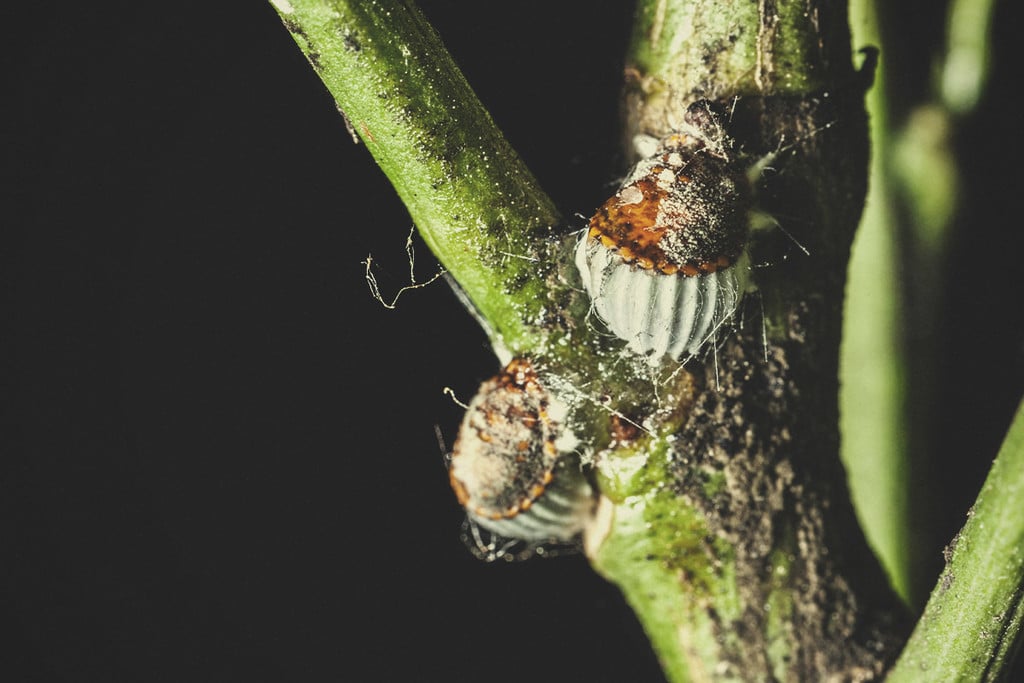.
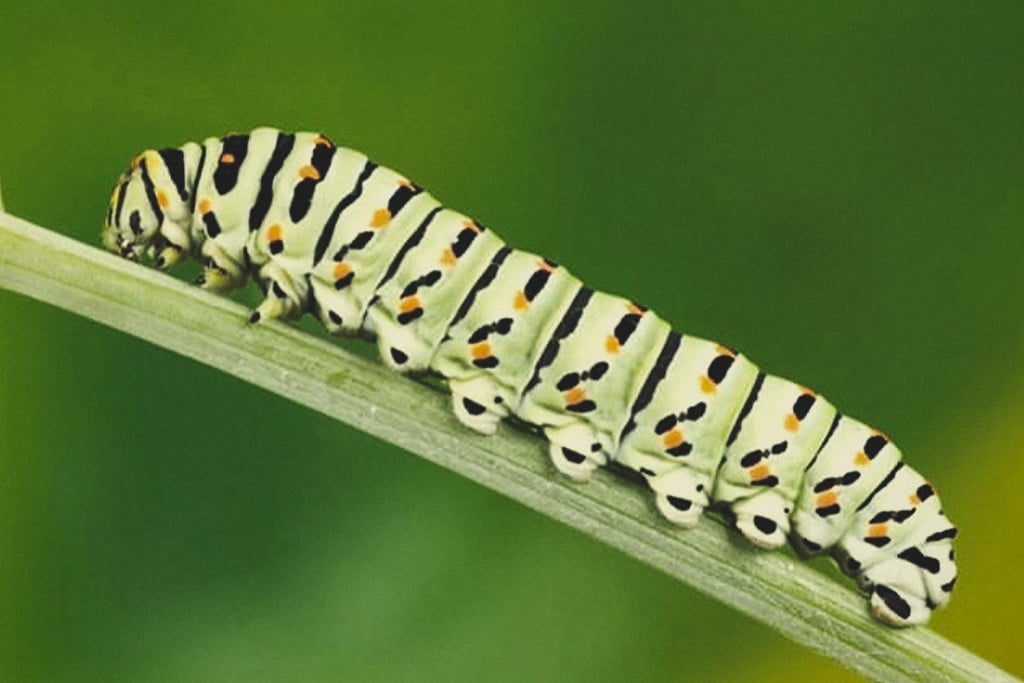
How to Keep Caterpillars Off Your Cannabis Plants
A healthy insect population contributes to healthy biodiversity in your garden. However, caterpillars can do some damage to your weed plants given the chance. This is how to deal with them.
Contents:
- What is a caterpillar?
- Will caterpillars kill my cannabis plants?
- How to spot a caterpillar infestation
- Removing caterpillars from cannabis plants
- How to prevent caterpillars on cannabis plants
- Caterpillars and cannabis: the bottom line
- How to deter large insects
- Shield your weed from small insects
- Keep your crop safe from hungry animals
Growing cannabis outdoors comes with many benefits: more space, bigger yields, the sun on your skin… However, these positives don’t come in isolation. Outdoor growers have to keep on their toes to prevent the local wildlife from feasting on their crop.
While aphids and whiteflies are some of the most infamous cannabis pests, caterpillars can do some damage too. Learn how to prevent and remove them below.
WHAT IS A CATERPILLAR?
Caterpillars represent the larval stage in all moth and butterfly species, and researchers estimate there are over 175,000 species around the world.
These soft-bodied insects range anywhere from 1mm to 14cm in length. The majority of them are strictly herbivorous, except for a carnivorous and cannibalistic minority.
Caterpillars are differentiated from other larval species based on specific anatomy. Their key features include:
• Maximum of five pairs of legs
• Twelve stemmata (simple eyes)
• The presence of crochets on the prolegs (limbs that allow them to climb well)
• “Y” or “V” shaped cleavage lines on the front of the head
We rarely see the interesting behaviour of caterpillars with the naked eye, however, closer inspection reveals the fascinating world of these creatures—from their chemical defences to unique social behaviours such as forming alliances with ants.
WILL CATERPILLARS KILL MY CANNABIS PLANTS?
At the very least, caterpillars will do some damage to your cannabis plants. A minor infestation will leave holes scattered throughout your fan leaves, and a larger problem can lead to fatal damage that cannot be remedied.
Of the thousands of caterpillar species, a select few are more frequently problematic to cannabis growers. The cabbage looper[1], for example, prefers to graze on the surface of fan leaves, using its siphoning mouthparts to strip away pieces of tender tissue.
Other species go directly to other parts of the plant’s anatomy, such as the stems. If this major structural component becomes compromised, a plant may never recover. For these reasons, you should constantly be on the lookout for caterpillars, ready to remove them from your growing space.

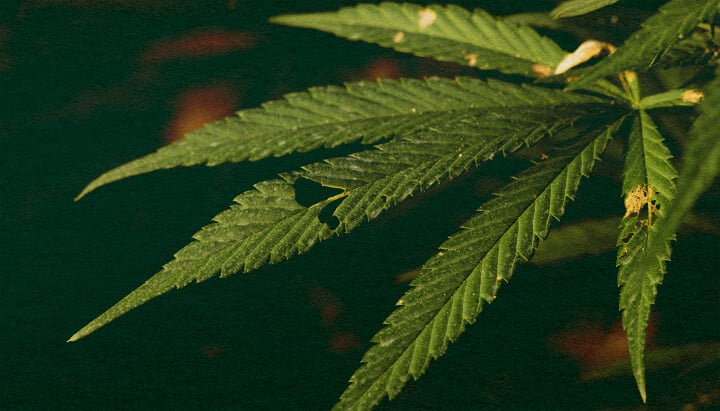
HOW TO SPOT A CATERPILLAR INFESTATION
A caterpillar infestation can range from a few inconvenient holes in foliage to total devastation of a specimen and subsequent loss of yield. Regardless of the severity, these hungry critters always leave some of the below symptoms in their wake.
• Irregular holes: Caterpillars will chomp your leaves, but they won’t be neat about it! They’ll leave oddly shaped holes in your fan leaves that range in size from several millimetres to several centimetres across.
• Stem damage: Species such as the Eurasian hemp borer bypass the leaves and decide to feast on the denser material found in the stems and branches. They make a hole in the surface of the tissue and bore through the interior of the structure.
• Chewed flowers: Borer species will also have a go at your flowers—a heartbreaking sight for any grower to endure. They’ll burrow into your buds and relish in the supply of resin and precious phytochemicals. They primarily aim for the base of developing buds, resulting in wilting and death of the flower.
• Leaf yellowing: Damage to your plants—particularly the stems—can affect water and nutrient transportation. Leaves located above the point of damage will likely begin to yellow due to a lack of these vital components.
• Stunted growth: Chances are you’ll have noticed the infestation by the time you realise your plants are becoming stunted. Caterpillar damage can stress plants out, reducing their size and productivity.
REMOVING CATERPILLARS FROM CANNABIS PLANTS
Although they have the potential to do some real damage, caterpillars are relatively easy to get rid of. Many conventional gardeners reach for a bottle of pesticide as a solution, but most cannabis growers aren’t keen on spraying their plants and living soil with noxious chemicals.
Fortunately, there are numerous natural and organic means of putting an end to a roaming caterpillar horde in your garden. Here are the easiest ways.
• Physical removal: Caterpillars are perfectly visible to the naked eye. Unlike aphids, they are easy to spot. If you’re only dealing with a handful of specimens, simply pick them up, place them in a jar, and relocate them to a nearby natural setting. Many species are nocturnal, so prepare yourself for some nighttime hunting.
• Parasitic wasps: Why spend potential hours picking caterpillars from your crop when your own army of beneficial insects can do the job for you? Parasitic wasps prey on caterpillars and use their bodies to lay their eggs. Although the means of dispatch is nothing short of horrific, nature has engineered this species to take down caterpillars.
• Praying mantises: Masters of stealth, these cool-headed assassins wait patiently underneath leaves, hidden in flowers, and behind stems until their prey makes the first move. These brutal yet swift predatory insects do an effective job at reducing caterpillar populations.
• Bacterial sprays: These natural pesticides contain bacterial species that harm caterpillars, without posing a risk to cannabis plants or the people that smoke them. Avoid administering these sprays too close to harvest time. Formulas containing Bacillus thuringiensis will do the trick.
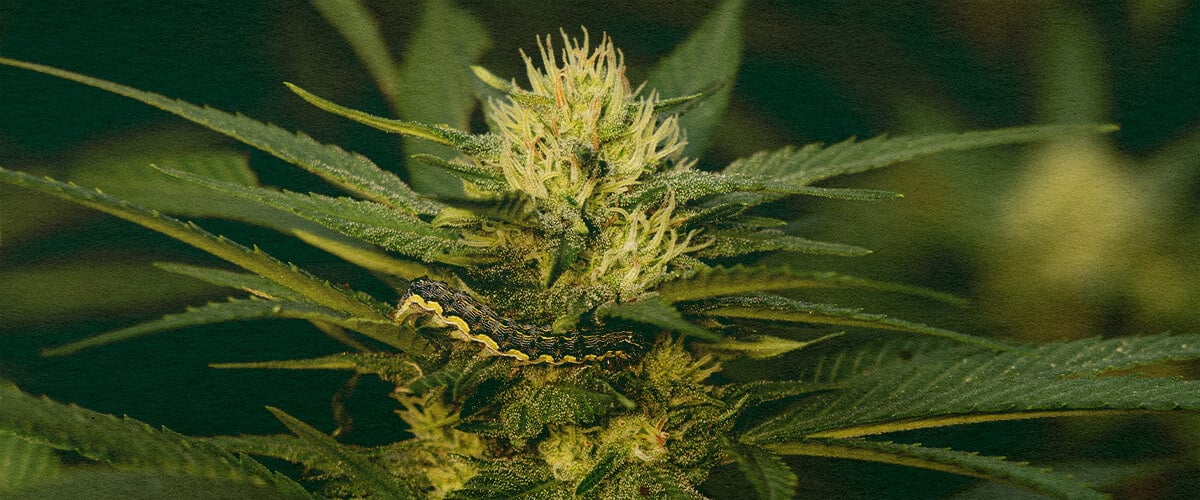
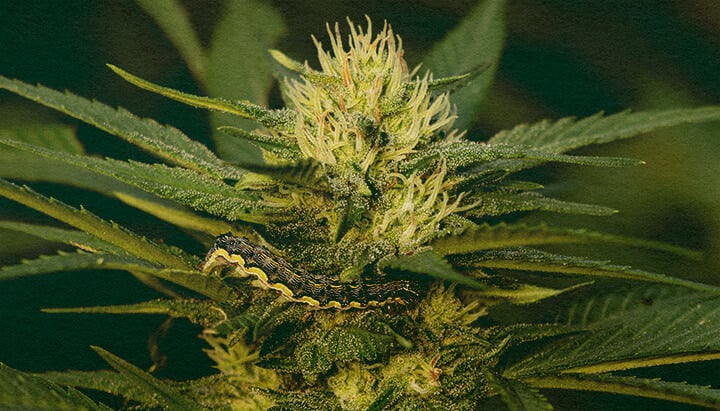
HOW TO PREVENT CATERPILLARS ON CANNABIS PLANTS
As the age-old adage goes: Prevention is better than cure. You can take certain measures to avoid infestations taking hold in the first place, saving you time, effort, and damaged plants.
• Beneficial insects: Introducing insects as a preventive measure will minimise the risk of infestation. Add these patrolling insects before you even transplant outdoors to allow them to build a substantial population.
• Barrier fabrics: They might not look pretty, but they are effective. Set up a wooden frame and fabric layer around your crop to prevent caterpillars from physically reaching them to feast and lay eggs.
• Neem oil: Derived from a South Asian tree, neem oil serves as a natural pesticide. It contains phytochemicals that deter insects when administered as a soil drench or foliar spray.
CATERPILLARS AND CANNABIS: THE BOTTOM LINE
Caterpillars are beautiful creatures that contribute to the biodiversity of any garden. Remember, they become butterflies that will eventually pollinate your vegetable patch! However, agriculture remains a tug of war between our ambition to grow food and herbs and many creatures’ desire to eat them.
Prevention serves as the best strategy. If you know that your garden is a hotspot, utilise fabric barriers and insects early in the growing season. If you’re growing for the first time or haven’t experienced caterpillar issues, see how things go. You can always use the methods listed above to protect your plants and ensure a successful harvest.
How to Deter Large Insects
Caterpillars How to Keep Caterpillars Off Your Cannabis Plants
How to Deter Large Insects
CaterpillarsHow to Keep Caterpillars Off Your Cannabis Plants
Shield Your Weed From Small Insects
Shield Your Weed From Small Insects
Keep Your Crop Safe From Hungry Animals
Keep Your Crop Safe From Hungry Animals
- Cabbage Looper https://texasinsects.tamu.edu


























